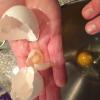Transgender Characters And Other Gender Politics
By AntoniaACOctober 21, 2016 - 20:38

Gender in America in the 1960s could be wrapped neatly with a bow by the word rigid (cisnormative). The nation's consensus was that a person’s biological sex assignment as male or female at birth was the person's gender identity that was upheld throughout life. Masculine and feminine were the traditional structural identities that people were confined to. While prior to the Stonewall Riots transgender and queer people existed, their visibility was erased by police brutality, discrimination, and misrepresentation. In her novel, Getting Mother’s Body, Suzan-Lori Parks creates a character, Dill Smiles, whose gender identity is represented as ambiguous throughout the novel.








